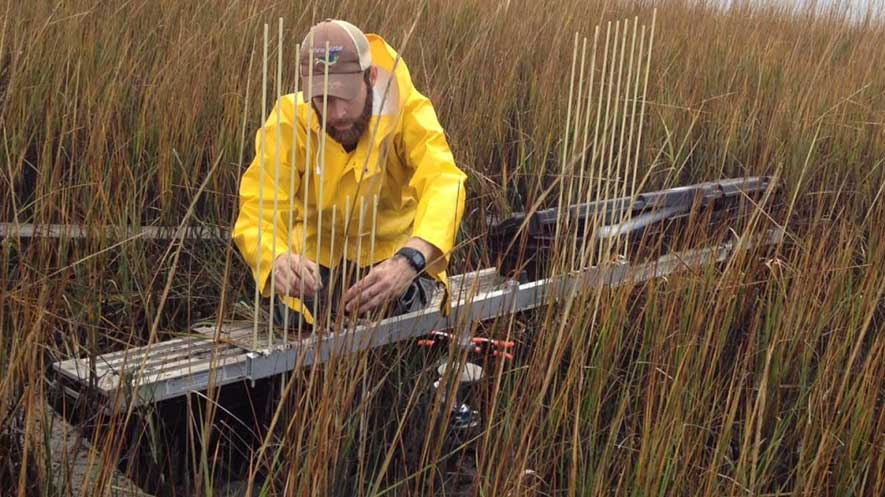The initial study focused on 16 marsh areas in 13 states. The higher resilience rating for Pacific marshes is because West Coast marshlands are generally at higher elevations, and Pacific oceanographic circulation tends to push water away from the coast, reducing the effect of sea level rise.
The study was conducted by NOAA’s National Estuarine Research Reserve System. The technical report, Assessing tidal marsh resilience to sea-level rise at broad geographic scales with multi-metric indices, was published in the journal Biological Conservation. The study evaluates the ability of tidal marshes to thrive as sea levels rise according to five categories of resilience: marsh elevation; change in elevation; sediment supply; tidal range; and rate of sea level rise.
Of the areas evaluated, one marsh in Narragansett Bay, Rhode Island and another in Massachusetts’s Waquoit Bayoff were found to be the most vulnerable.
“This study shows that not all tidal marshes are equally vulnerable to sea level rise,” said Jeff Payne, Ph.D., director of NOAA’s Office for Coastal Management.
“Even more importantly, it gives coastal managers a much needed new tool—the capacity to understand and compare the ability of marshes to persist in the face of rising seas. This will help us make decisions on protecting marshes in the years ahead.”
Find out more about the assessment and how coastal communities can use it here.

